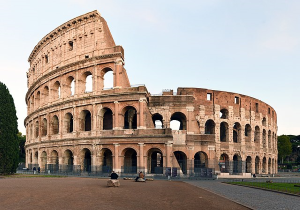 CNN reports on how scientists behind a new study say they have uncovered the mystery ingredient that allowed the Romans to make their construction material so durable and build elaborate structures in challenging places.
CNN reports on how scientists behind a new study say they have uncovered the mystery ingredient that allowed the Romans to make their construction material so durable and build elaborate structures in challenging places.
By FeaturedPics – Own work, CC BY-SA 4.0, Commons Wikimedia
…‘hot mixing’ was key to the concrete’s durable nature…
CNN Style writes:
… Roman concrete, in many cases, has proven to be longer-lasting than its modern equivalent, which can deteriorate within decades. Now, scientists behind a new study say they have uncovered the mystery ingredient that allowed the Romans to make their construction material so durable…
The study team, including researchers from the United States, Italy and Switzerland, analyzed 2,000-year-old concrete samples that were taken from a city wall at… Privernum, in central Italy, and are similar in composition to other concrete found throughout the Roman Empire.
They found that white chunks in the concrete, referred to as lime clasts, gave the concrete the ability to heal cracks that formed over time. The white chunks previously had been overlooked as evidence of sloppy mixing or poor-quality…
Lime clasts and concrete’s durability
… the researchers concluded that lime clasts arose because of the use of quicklime (calcium oxide) — the most reactive, and dangerous, dry form of limestone — when mixing the concrete, rather than or in addition to slaked lime.
Additional analysis… showed that the lime clasts formed at extreme temperatures expected from the use of quicklime… “hot mixing” was key to the concrete’s durable nature…
